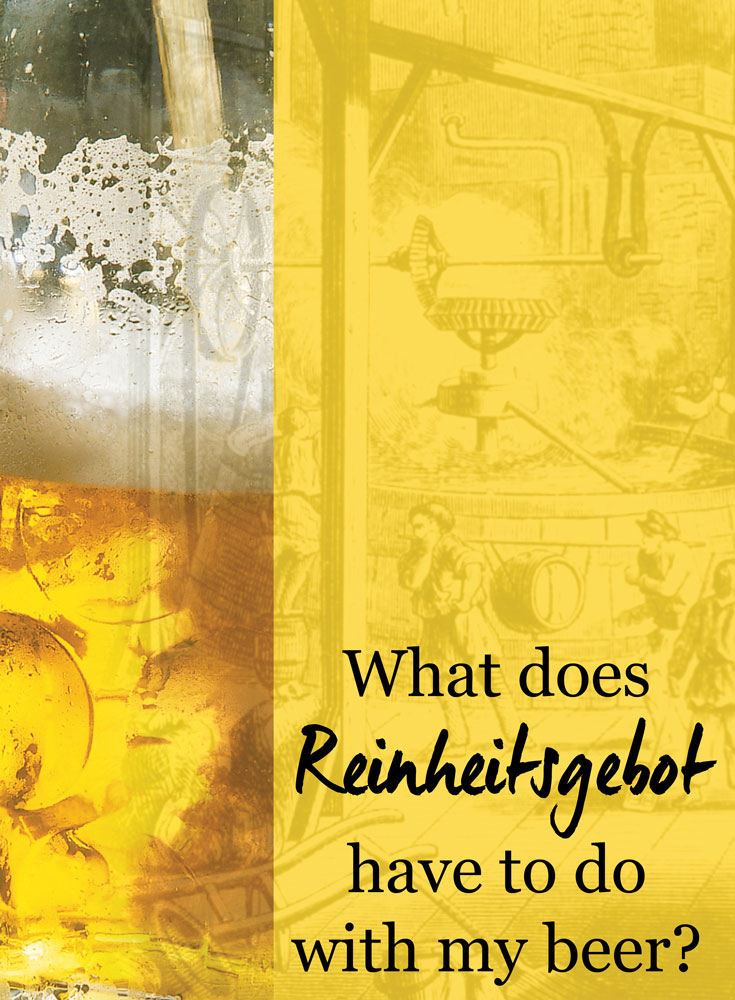Disclosure: Please note that some links are affiliate links, and at no additional cost to you, we earn a commission if you make a purchase.
If you would like to support this website in some way, using these links will help do exactly that.

In the 16th century, one beer could be your last.
The Bavarian Duke William IX was justly concerned that beer was frequently contaminated with sawdust and even poisonous plants. He and his brother Duke Ludwig X enacted the famous decree now known as the Reinheitsgebot, the German Beer Purity Law, on April 23rd, 1516 in the Bavarian city of Ingolstadt. The law was introduced as a Landesverordnung (State Act) in Bavaria.
With a regulating purity law in place, citizens would be protected from low-quality and potentially lethal beer. Since water supplies were often polluted at the time, people preferred to drink beer as a safer alternative, thanks to its fermentation process. In honor of its 500 year anniversary this weekend, Denise and I wanted to bring you up to speed!
In 1918 it was called Reinheitsgebot (German Beer Purity Law) for the first time. The purity law requires that, “nothing other than barley, hops and water be used” to produce beer. Yeast was the fourth ingredient added to the purity law, but not until the 19th century when scientists discovered the fermenting agent. After the German unification in 1871, Bavaria demanded the introduction of the law all over the country. The Reinheitsgebot expanded to other parts of Germany in 1906.
How does U.S. beer fit into the law?
The German Beer Purity Law was an early food safety regulation, but there was no equal law ever created in the United States. While the U.S. Food and Drug Administration would never approve a brewer producing an unsafe product, they also do not forbid the use of non-traditional ingredients in beer. Today many American microbreweries and large beer companies experiment with different grains like rice or corn and infuse the beer with coffee beans, honey or different fruits. This progress showed that beer does not have to be a light-yellow, slightly bubbly, bitter-tasting beverage but that it can have a wide variety of flavors while still being a quality beer.
Beer Purity Today
German breweries today continue to use only the four natural ingredients mentioned in the Reinheitsgebot to create over 40 different types of beer, for example Alt beer in Westphalia and the city of Düsseldorf or Kölsch in the city of Cologne area. And while it is legal to import beers into Germany that are brewed with different grains and even treated with chemicals for a longer shelf life, most Germans still take pride in their ‘pure’ beer. And the large beer companies continue to use the slogan that their beer was brewed in accordance with the German Beer Purity Law from 1516 because it serves for a great marketing phrase.
Happy Anniversary Reinheitsgebot!
Have a beer this Saturday to celebrate and let us know in the comments, which German beer is your all-time favorite.
Follow Along
If you enjoyed this article, or these topics sound interesting to you, you'll love our weekly newsletter. You'll receive a free Germany Packing list for signing up, and you'll receive each week's newest posts every Friday. Thank you for reading!
Bonus Resources
• Video If you have 2 minutes and want to learn even more about the German Beer Purity Law, make sure to watch this video from Deutsche Welle TV:
• Listen to the podcast episode "One People, Many Sausages" that mentions the Reinheitsgebot, by BBC Radio 4, Germany: Memories of a Nation
• Read More on the homepage for the 500 year anniversary celebratory page Reinheitsgebot, maintained by the German Brewers Association. We also found the stock images necessary for our Title image collage thanks to them! The source images are shared on their flickr account Brauer-bund with a Creative Commons Attribution-NonCommercial license.
